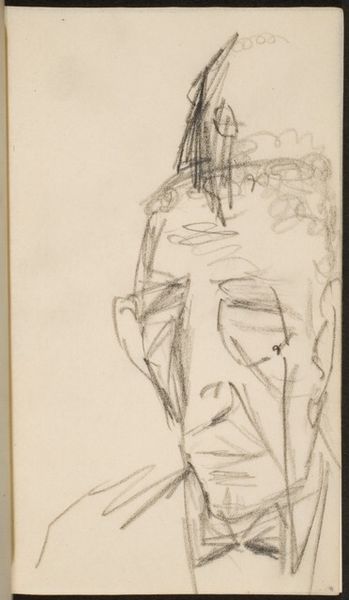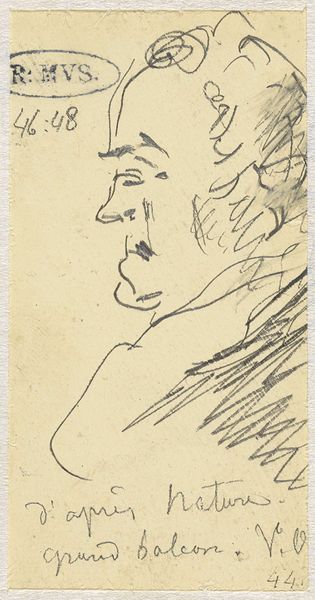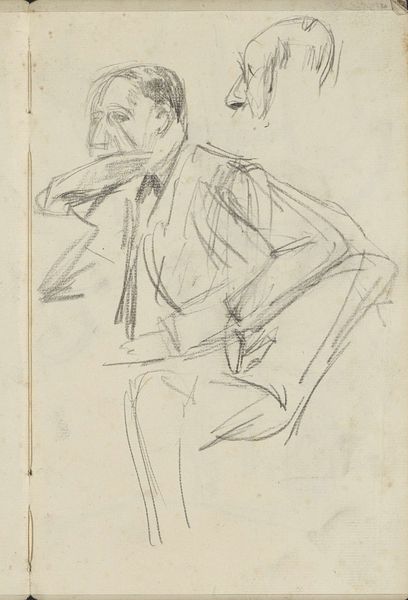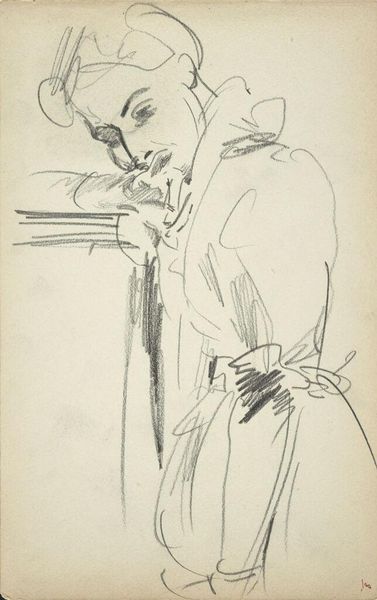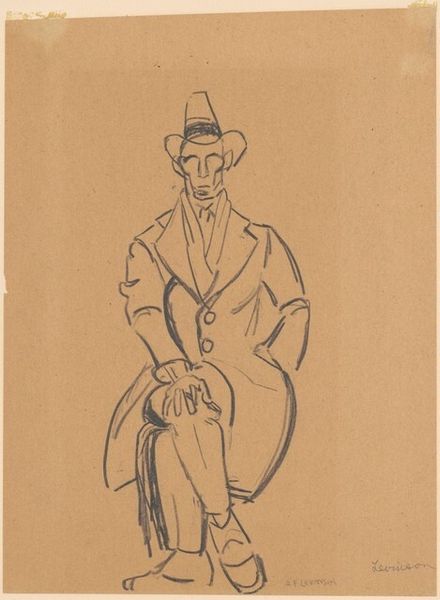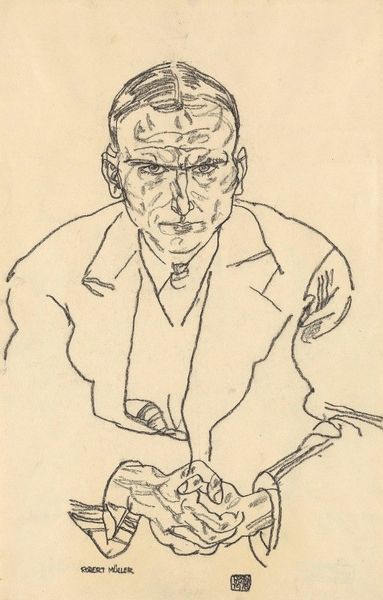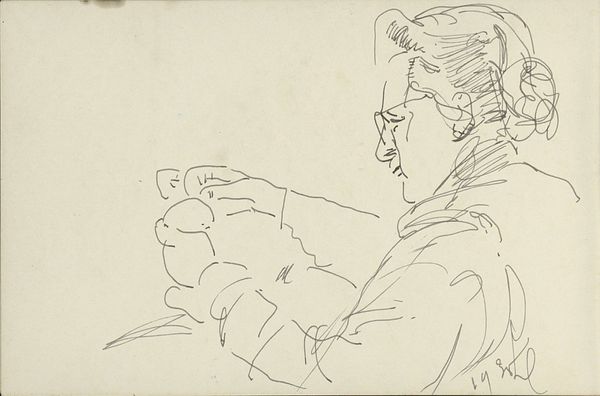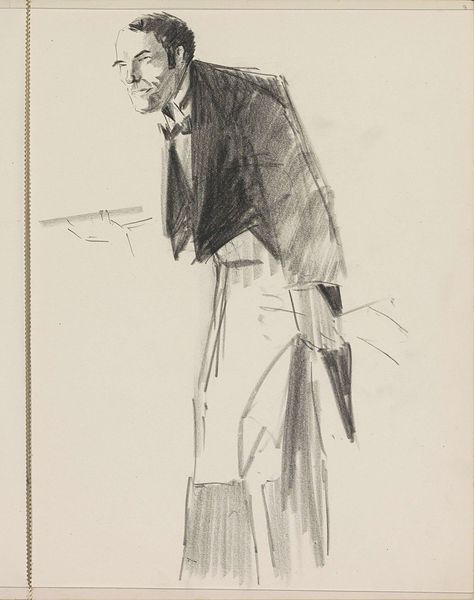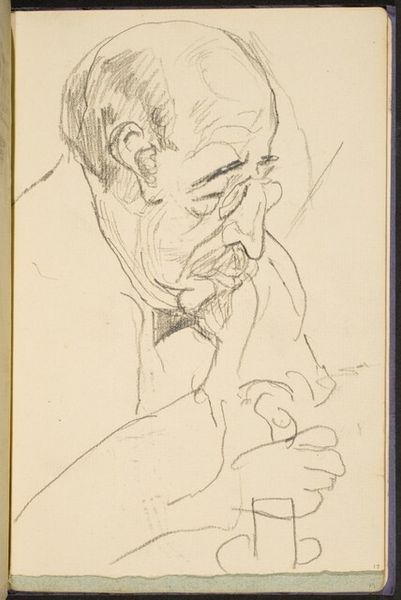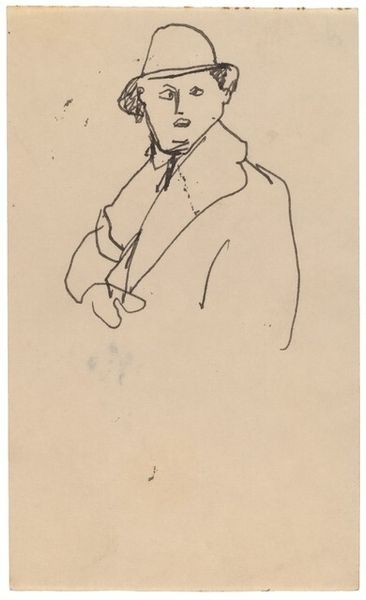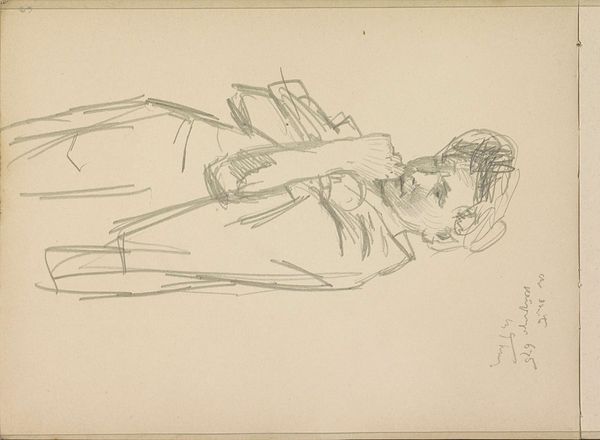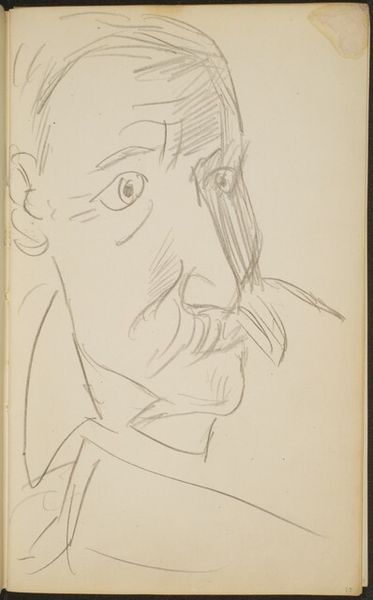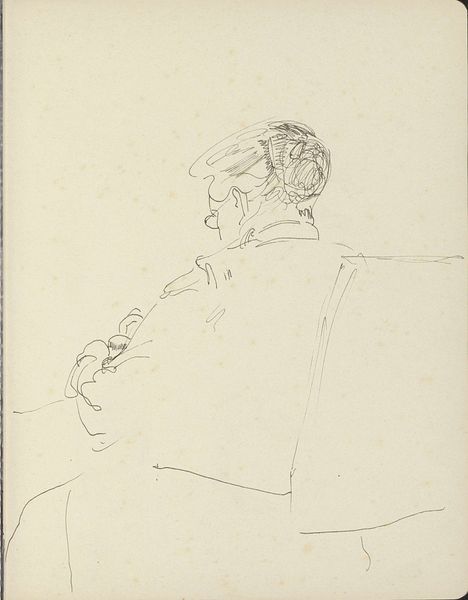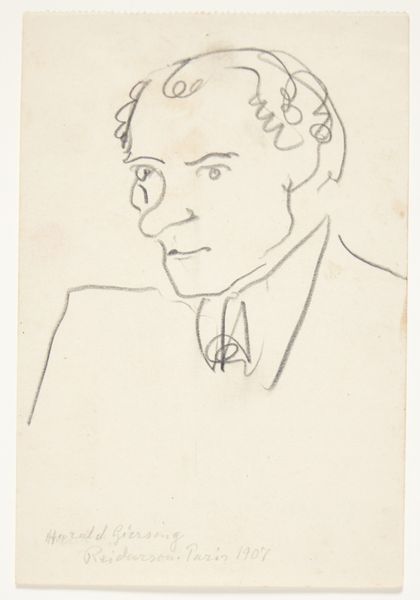
Copyright: Public Domain: Artvee
Curator: Look at the incisive linework in "Roderick Mac Kay, Pianist" done in 1986 with pencil on paper. Editor: My immediate thought is severity. The figure seems to loom, casting a stern judgment. The starkness of the pencil heightens that effect. Curator: Indeed, the lines have an economy and almost harsh quality, especially across his forehead and around the eyes. How do you think the medium, simply graphite on paper, contributes to its accessibility and potential audience? Editor: The raw materials speak volumes. The lack of color or elaborate presentation places the emphasis squarely on the subject and the skill in depicting him. It almost democratizes portraiture – focusing on the labour invested. One cannot help to consider if Mac Kay himself recognized the institutional framing of portraits and benefited or was penalized by such representation. Curator: Yes, pencil on paper connects directly to labor—it's immediate, demanding draftsmanship. In contrast to painting, the absence of layering and blending makes the artist's hand much more apparent. Tell me, what does it tell us about portraiture in general, considering both the artist and the sitter and the intended audiences throughout decades, and artistic movements and aesthetic evolutions? Editor: It serves as a register. A pencil drawing like this inverts notions of bourgeois display; instead it focuses the eye on the figure, as you mentioned before, through an individual process rather than elaborate execution of painting which would allow certain level of social climbing or pretense through stylistic references or status displays. Curator: Perhaps Mac Kay sought this kind of unaffected depiction? We only know as much as is recorded, here, which certainly makes the picture feel like the intention of the artist for that intention to echo among viewers. Editor: Ultimately, "Roderick Mac Kay, Pianist" strikes me as an intriguing piece of cultural commentary precisely through its apparent simplicity. Curator: Yes, and seeing how a specific historical representation such as this intersects with the viewer's understanding of artistry makes one appreciate its multilayered engagement.
Comments
No comments
Be the first to comment and join the conversation on the ultimate creative platform.
